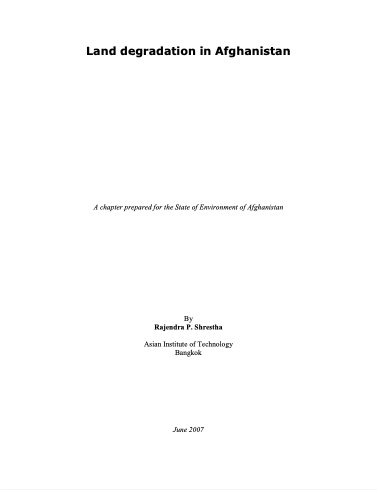Resource information
Land is very important natural resource to the human being as it provides the basis for more than 95% of human food. On the broader context, land has many other functions, e.g. provision of biological habitats and physical and connective space; regulation of hydrology and climate; storage of minerals, raw materials and historical/pre-historical records; and as a buffer to control waste and pollution. Expanding human requirements and economic activities are placing ever increasing pressures on land resources, creating competition and conflicts and resulting in suboptimal use of land.
Land degradation refers to land which due to natural processes or human activity is no longer able to sustain properly an economic function and/or the original natural ecological function (Eswaran et al., 2001) arising from the causes, like deforestation, inappropriate agricultural practices, and overgrazing. The term ‘desertification’ however seems to be used interchangeably with ‘degradation’, the former, which is more serious in nature, is caused by climate and land degradation. Land degradation which has interlocking relation with the major global environmental change components, e.g. biodiversity and climate change, is equally cause and effect of poverty bearing long term environmental externalities to which people in marginal lands are especially vulnerable.
In this context, while environmental concerns and sustainable development are on the agenda of the global community, the war-ravaged country of Afghanistan is facing a devastating environmental crisis, and land degradation is one of the prime concerns as the cost to Afghanistan of desertification is colossal. This chapter examines the major land degradation issues, their causes, and conservation opportunities within the Pressure-State-Response framework.

